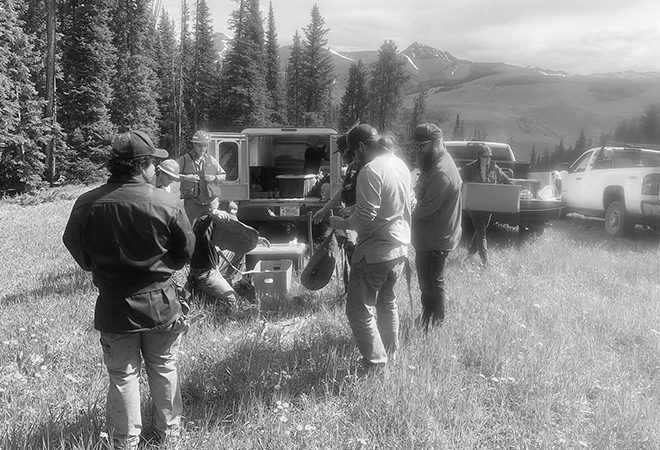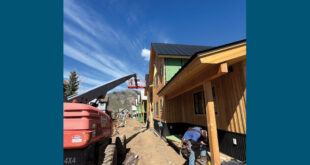Working with the Forest Service
by Cayla Vidmar
With wildfire season fast approaching, Vail Resorts is preparing for the approval of the revised Crested Butte Mountain Resort (CBMR) vegetation management plan, which will help abate wildfire danger on the slopes. The plan is separate from a larger sustainability and environmental plan the company is bringing to Crested Butte.
From early summer 2019 through the beginning of 2020, Australia took center stage when bushfires destroyed around 40 million acres, according to the Weather Channel, including infrastructure at Selwyn Mountain Resort in the Snowy Mountains, located about seven hours south of Sydney. Areas that sit in the wildland-urban interface, such as ski resorts, are particularly at risk for wildfires, making the revision of the outdated vegetation management plan at CBMR increasingly important.
According to Will Shoemaker, senior communications specialist with CBMR, the resort “has produced a revised vegetation management plan with assistance from Western Colorado University Master in Environmental Management students,” that, he says, replaces the “former, decades-old” document.
This management plan was approved in May by the Grand Mesa, Uncompahgre and Gunnison National Forests (GMUG), and does address wildfires, says Shoemaker. “Specifically, it looks at what is most at risk based on density and age of trees,” he explained.
The plan would involve “glading in certain areas, closing some tree islands, monitoring for bark beetles and forest health, removal of infected trees, noxious weed spraying and replanting/reseeding.”
Shoemaker also noted that dead and downed trees are “regularly removed to reduce the risk of wildfire, and when fire restrictions are in effect locally, we change certain protocols.”
During certain weather events such as a red flag warning, Shoemaker explained, “Mountain Operations prohibits any open flame or welding on both public and private lands on which CBMR operates,” a measure, he notes, that is typically above and beyond requirements imposed by local jurisdictions or land managers. Red flag warnings, as described by the National Weather Service, are weather events during which high temperatures, very low humidity and high winds combine to produce circumstances of increased fire danger. In Gunnison County, a red flag warning mandates no open burning, such as campfires or for weed control.
Updating the vegetation management plan was a priority for CBMR prior to the Vail Resorts acquisition. “The U.S. Forest Service and CBMR rely on a strong partnership to be out front of the ever-changing natural environment,” says Shoemaker.
“CBMR is pretty well-off overall based on the mountain’s location and terrain,” according to Shoemaker, noting that the resort is surrounded on three sides by river valleys, and the forest on the mountain is broken up by ski runs.
With the acquisition of CBMR, the Vail Resorts vegetation management plan is one piece of Vail’s larger climate initiative, most notably its zero emissions by 2030 commitment. The Plum Creek Wind Project will be a large factor in achieving this goal, and is set to come online this year. The project will “address almost 100 percent of [Vail Resorts’] North American electricity use by bringing new energy to the grid,” the energy equivalent, Shoemaker notes, of powering 30,000 homes.
Other aspects of the company’s sustainability and environmental initiatives are already under way at CBMR, including the planting of 600 trees in the Double Top Glades in the East River zone, as previously reported in the Crested Butte News.
 The Crested Butte News Serving the Gunnison Valley since 1999
The Crested Butte News Serving the Gunnison Valley since 1999


